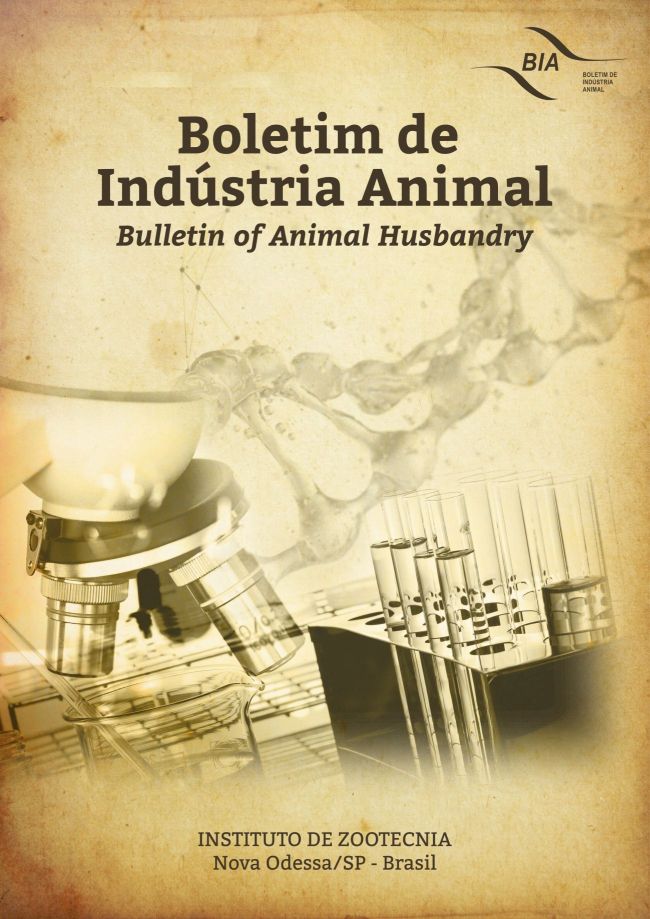Native Bees Associated With Siratro (Fabaceae) in an Environmental Recovery Area
Palavras-chave:
Bee fauna, ecosystems, insectsResumo
Macroptilium atropurpureum (purple bush-bean or siratro) is a perennial vine belonging to the botanical family Fabaceae. It is adapted to dry soils, not tolerating waterlogged soils. Siratro is a cover plant that can be used in different ways, such as fixing nitrogen in the soil, producing forage for cattle and sheep, combating erosion, and revegetating anthropized areas. It also has effects against root-knot nematodes, and can be planted in areas intended for fruit growing to combat undesirable plants, as well as in combination with grasses. The siratro plant has reddish-purple inflorescences of the racemose type, and the flowers are composed of two petals with a third serving as a vane. The reproductive structures are self-compatible, that is, the species has self-pollination. However, the presence of pollinators, including bees, favors the plant€™s reproduction. The present study aimed to identify the species of native bees visiting the inflorescences of Macroptilium atropurpureum between March and December 2020 in an environmental recovery area located at the Federal Institute of Education, Science and Technology of Espírito Santo, in Alegre, south of Espírito Santo state. The samples were collected monthly between 10 a.m. and 2 p.m., totaling a sampling effort of 40 hours. The bees were captured using the transect method of sweeping over flowers with an entomological net. The inflorescences were observed for 10 minutes and the visiting bees were collected and transferred to a killing flask containing ethyl acetate. Then the bees were sorted, dried, identified, labeled, and deposited with the Caparaó Museum of Zoology. Fifty-six specimens were collected, representing eight bee species, distributed in four tribes and two families: Eulaema nigrita Lepeletier, 1841, Euglossa cordata (Linnaeus, 1758); Euglossa fimbriata Moure, 1968; Euglossa leucotricha Rebêlo & Moure, 1996; and Euglossa sp. 1 Latreille, 1802, belonging to Euglossini, Apidae; Centris fuscata Lepeletier, 1841, belonging to Centridini, Apidae; Epanthidium tigrinum (Schrottky, 1905), belonging to Anthidiini, Megachilidae; and Megachile sp.1 Latreille, belonging to Megachilini, Megachilidae. As for the abundance, Euglossa cordata was the most representative, accounting for 35% of the individuals collected, followed by Euglossa fimbriata, with 20%, Euglossa sp.1, with 15%, Megachile sp.1, with 9%, Epanthidium tigrinum, with 7%, Euglossa leucotricha and Eulaema nigrita, with 6% each, and Centris fuscata, with 2%. The Euglossini tribe showed a relevant association with siratro, with 82% of the collected bees belonging to this tribe. Representatives of the Euglossini tribe are known as €œorchid bees€, since males visit orchids in search of fragrances for use to attract females, and are involved in pollination of several native botanical species of agricultural interest. Euglossa cordata is a generalist bee, being able to travel long distances in search of food resources. However, other generalist bees of the tribe, such as Eulaema nigrita, were not abundant in the area. The bees of the Megachilidae family, represented by two species in this study, showed the highest rate of visitation to the siratro inflorescences, about 70%, between 12 a.m. and 2 p.m., while the species belonging to the Apidae family, in the Euglossini and Centridini tribes, did not show a preferred time interval for visiting the inflorescences. The presence of pollinators in the environment is essential, especially in areas that are undergoing recovery, since these insects contribute to the reproduction of botanical species, helping in the vegetative development of the area. Therefore, enriching areas in environmental recovery with fast-growing forage cover crops, such as siratro, favors the nutritional and edaphic improvement of the soils, as well as benefits the native bee fauna, by providing food and shelter, while the native flora is in the process of regeneration.
Downloads
Downloads
Publicado
Edição
Seção
Licença
Os autores não serão remunerados pela publicação de trabalhos, pois devem abrir mão de seus direitos autorais em favor deste periódico. Por outro lado, os autores ficam autorizados a publicar seus artigos, simultaneamente, em repositórios da instituição de sua origem, desde que citada a fonte da publicação original seja Boletim de Indústria Animal. A revista se reserva o direito de efetuar, nos originais, alterações de ordem normativa, ortográfica e gramatical, com vistas a manter o padrão culto da língua e a credibilidade do veículo. Respeitará, no entanto, o estilo de escrever dos autores. Alterações, correções ou sugestões de ordem conceitual serão encaminhadas aos autores, quando necessário. Nesses casos, os artigos, depois de adequados, deverão ser submetidos a nova apreciação. As opiniões emitidas pelos autores dos artigos são de sua exclusiva responsabilidade. Todo o conteúdo deste periódico, exceto onde está identificado, está licenciado sob a Licença Creative Commons Attribution (CC-BY-NC). A condição BY implica que os licenciados podem copiar, distribuir, exibir e executar a obra e fazer trabalhos derivados com base em que só se dão o autor ou licenciante os créditos na forma especificada por estes. A cláusula NC significa que os licenciados podem copiar, distribuir, exibir e executar a obra e fazer trabalhos derivados com base apenas para fins não comerciais.













